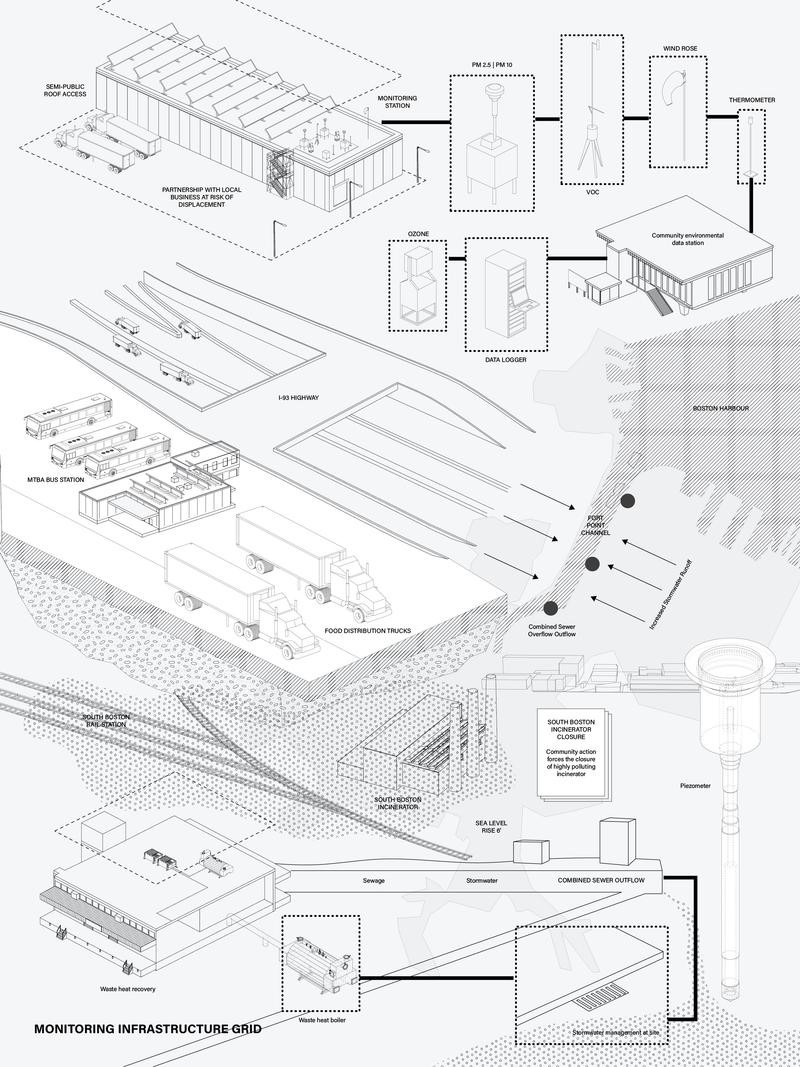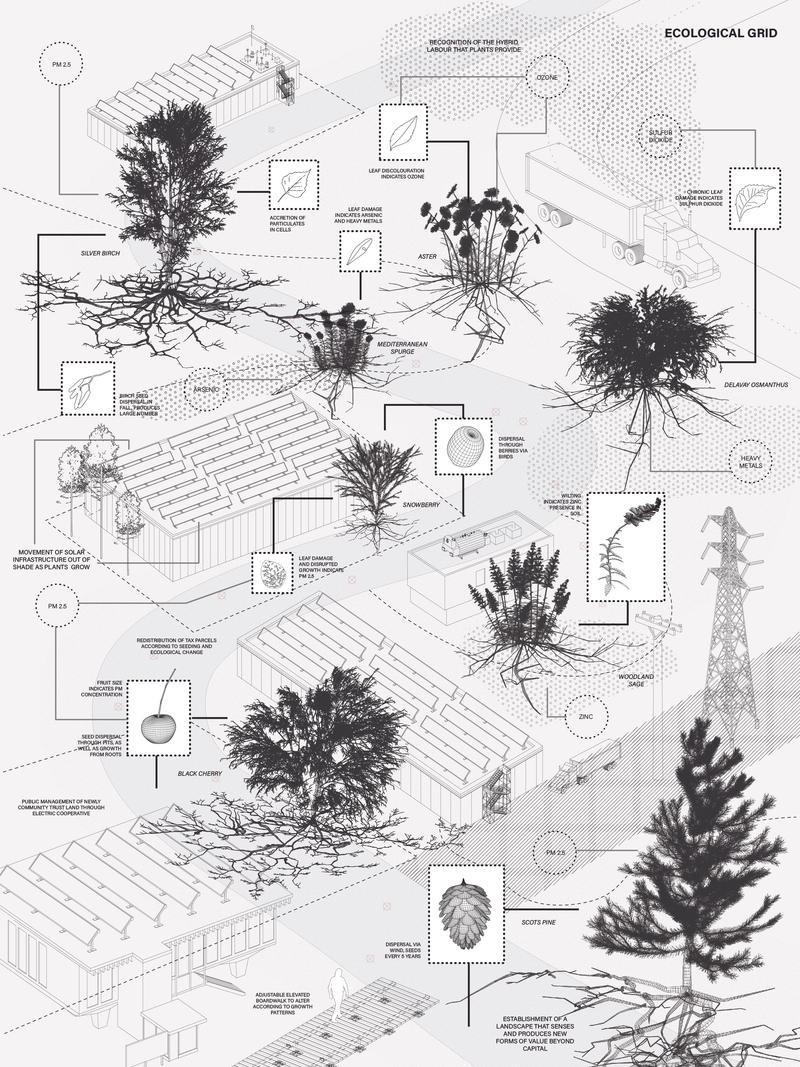LOT###: Immanent Domain, Imminent Ecologies
MLA Studio, Harvard Graduate School of Design (2022)
Advised by Rosalea Monacella
We commonly think of infrastructure as the implementation of technological apparatuses, including solar energy systems or environmental sensing. The ability to be measured, gridded, and ascribed economic value is integral to the systems of land value that determine the developmental possibilities of urban property. We don’t often think the same way about plants; their presence can be retooled as economic value if they are treated as green infrastructure, but the focus on capital accumulation negates the possibilities to think with these timescales and priorities. This project aims to treat ecological actors—plants—as type of infrastructure where plants do not just add economic value to a site, but rather offer a model to redefine the values ascribed to property through their growth. In tandem with more conventional forms of infrastructural tools such as energy and environmental monitoring systems, the project as a whole aims to derive alternative systems of labour and valuation for the benefit of local people and ecosystems.
Positioned in a complex set of social, economic, and ecological entanglements, Newmarket Square is faced with a future of gentrification driven by profit which will ultimately displace labour and people to the detriment of nearby residents. Drawing from work by nearbycommunity land trusts, this project aims to bring together ecological infrastructure with solar and environmental monitoring infrastructure to create ecological corridors held in community trust. The design offers solar infrastructure to power a microgrid serving nearby housing, environmental monitoring to establish measures to reduce harmful air and water contamination in a site marked by long-term environmental racism, as well as planting that will assist with environmental monitoring and alter the placement of solar infrastructure. On the site of two former alleyways in the industrial area—alleys that continue to exist as tax parcels but have since become fragmented by fences into parking lots—these corridors first aim to adopting air rights from nearby buildings to protect small businesses from developmental pressures. But with the planting, growing, and dispersal of plants along the corridor on the ground, the alteration of the tax parcels is seen as a growing, changing model that conceives property and infrastructure as having timescales attune to environmental and social needs as opposed to economic. In short, the ecological corridors proposed in the former alleys of the industrial site at Newmarket Square aim to imagine what kinds of futures are to be imagined if value and property is considered through the infrastructure of plants.
MLA Studio, Harvard Graduate School of Design (2022)
Advised by Rosalea Monacella
We commonly think of infrastructure as the implementation of technological apparatuses, including solar energy systems or environmental sensing. The ability to be measured, gridded, and ascribed economic value is integral to the systems of land value that determine the developmental possibilities of urban property. We don’t often think the same way about plants; their presence can be retooled as economic value if they are treated as green infrastructure, but the focus on capital accumulation negates the possibilities to think with these timescales and priorities. This project aims to treat ecological actors—plants—as type of infrastructure where plants do not just add economic value to a site, but rather offer a model to redefine the values ascribed to property through their growth. In tandem with more conventional forms of infrastructural tools such as energy and environmental monitoring systems, the project as a whole aims to derive alternative systems of labour and valuation for the benefit of local people and ecosystems.
Positioned in a complex set of social, economic, and ecological entanglements, Newmarket Square is faced with a future of gentrification driven by profit which will ultimately displace labour and people to the detriment of nearby residents. Drawing from work by nearbycommunity land trusts, this project aims to bring together ecological infrastructure with solar and environmental monitoring infrastructure to create ecological corridors held in community trust. The design offers solar infrastructure to power a microgrid serving nearby housing, environmental monitoring to establish measures to reduce harmful air and water contamination in a site marked by long-term environmental racism, as well as planting that will assist with environmental monitoring and alter the placement of solar infrastructure. On the site of two former alleyways in the industrial area—alleys that continue to exist as tax parcels but have since become fragmented by fences into parking lots—these corridors first aim to adopting air rights from nearby buildings to protect small businesses from developmental pressures. But with the planting, growing, and dispersal of plants along the corridor on the ground, the alteration of the tax parcels is seen as a growing, changing model that conceives property and infrastructure as having timescales attune to environmental and social needs as opposed to economic. In short, the ecological corridors proposed in the former alleys of the industrial site at Newmarket Square aim to imagine what kinds of futures are to be imagined if value and property is considered through the infrastructure of plants.

From public street to alley and back





Ungriddable grids




Unmaking and remaking: imminent ecologies


